14 Ways To Help A Nervous Cat Feel Safe And Secure
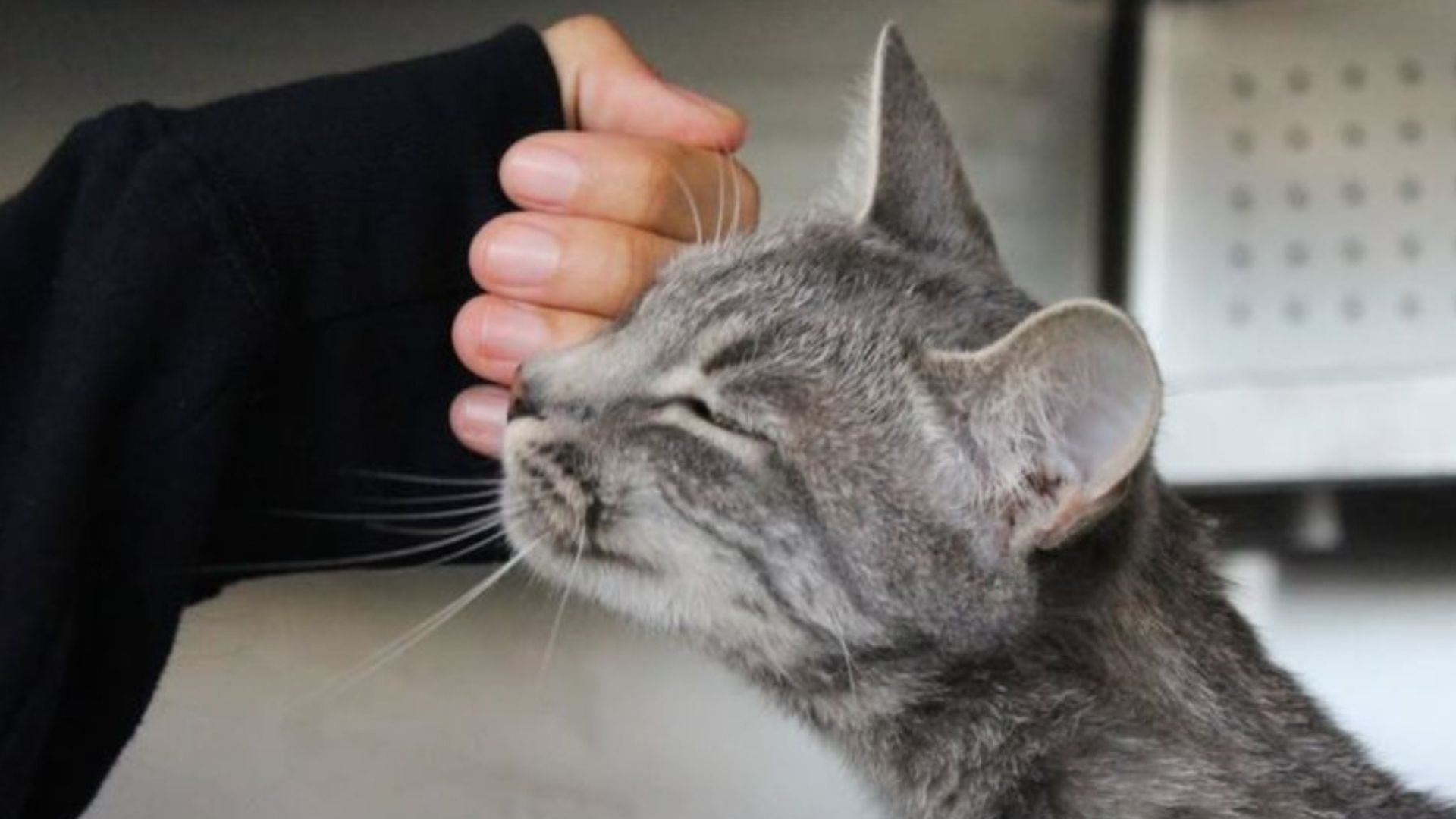
A nervous cat needs patience and reassurance to feel truly safe. Whether they’re adjusting to a new home or spooked by loud noises, small changes can help ease their anxiety.
Creating hiding spots, maintaining a routine, and using calming scents can make a big difference. Gentle interactions and a quiet environment help build trust over time.
With consistency and care, even the most timid cat can feel secure. Let’s look at simple ways to help your cat feel more at ease.
1. Create a Sanctuary Space

Every cat needs a kingdom, or at least a cozy corner to call its own. Imagine a warm nook where your cat can escape the hustle and bustle. A soft blanket, a few favorite toys, and gentle lighting can make all the difference. Think of it as your cat’s personal spa day, minus the cucumbers! Creating a dedicated space offers your cat a sense of ownership and belonging.
Privacy is key, so ensure the area is away from noisy appliances or high-traffic zones. This sanctuary becomes their little world, a place to retreat when the world feels like too much. It’s like giving them a VIP pass to peace and quiet.
Incorporating familiar scents, like a piece of clothing with your scent, can enhance comfort. Your cat will love this haven where they can decompress. Providing this personal hideaway isn’t just about physical comfort; it’s about emotional security. Knowing there’s a safe spot just for them can significantly reduce anxiety. It’s a small change with a big impact, truly a purr-fect solution.
2. Introduce Gradual Changes
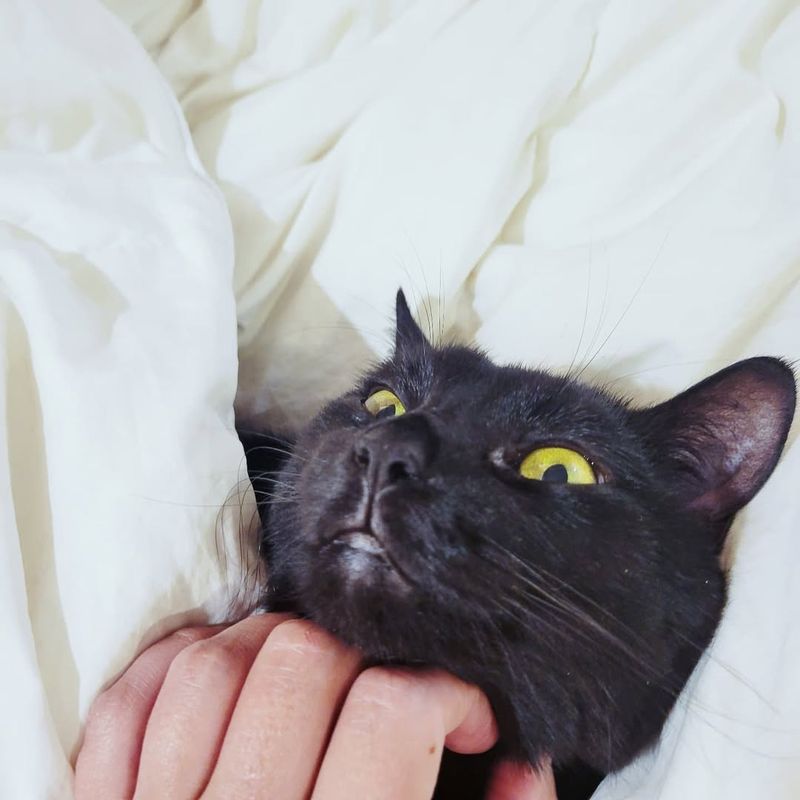
Cats are notorious creatures of habit, and sudden changes can make them jittery. If you’re planning to switch things up, remember that slow and steady wins the race. Introduce changes gradually, whether it’s new furniture or a new feline friend. This method allows your cat to adjust at their own pace, minimizing stress and anxiety.
Consider the world from their perspective—a new couch isn’t just a couch; it’s an alien invasion! By giving them time to explore and familiarize themselves with new surroundings or objects, you reduce the fear of the unknown.
Patience is your ally here. Let your cat sniff and inspect new additions to their environment. Maybe toss in a tasty treat or two as a bonus for bravery! It’s a bit like dating; you wouldn’t rush, right? Similarly, this gradual introduction fosters trust and confidence in your cat. They’ll soon learn that change doesn’t always mean chaos. Instead, it can bring about exciting new adventures and comfy napping spots.
3. Use Calming Pheromones
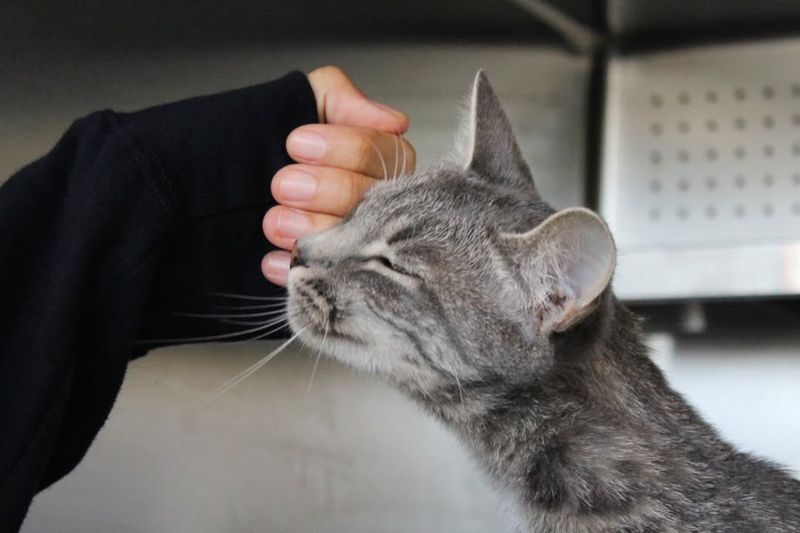
Pheromones are nature’s way of telling your cat, “Hey, it’s all good!” These chemical signals can work wonders in soothing anxious felines. Whether in the form of a diffuser or spray, calming pheromones mimic the natural ones cats produce to mark safe spaces.
Imagine it as an invisible blanket of security enveloping your home. Pheromones can make your cat feel like they’re in a perpetual cuddle session with their favorite human. It’s the catnip of comfort, minus the craziness.
Place diffusers in areas where your cat spends most of their time. It’s a simple yet effective way to create a serene environment. You might not see or smell a difference, but your cat’s behavior will likely speak volumes. These pheromones are a silent support system, easing stress and encouraging relaxation. It’s akin to playing a soothing melody that only your cat can hear. So, plug in the diffuser, sit back, and watch your kitty unwind to the invisible symphony of tranquility.
4. Establish a Routine

Consistency is the cat’s meow! Establishing a routine can significantly reduce your pet’s anxiety. Cats thrive on predictability, and setting a daily schedule for feeding, playtime, and cuddles can work wonders. It’s like giving your furry friend a roadmap to their day—no surprise detours!
Imagine waking up to the same breakfast time, followed by a playful chase of that elusive red dot, and ending with snuggles as the sun sets. A routine not only satisfies their basic needs but also provides a sense of control over their environment.
Breaking up the day with specific rituals gives your cat something to look forward to. Perhaps a mid-morning bird-watching session at the window or an afternoon nap in a sunbeam. These small, consistent activities build trust and security. Think of it as turning your cat’s life into a well-choreographed dance, where every step is familiar and comforting. With time, your cat will anticipate and appreciate these daily rhythms, leading to a more relaxed and contented companion.
5. Provide Plenty of Hiding Spots
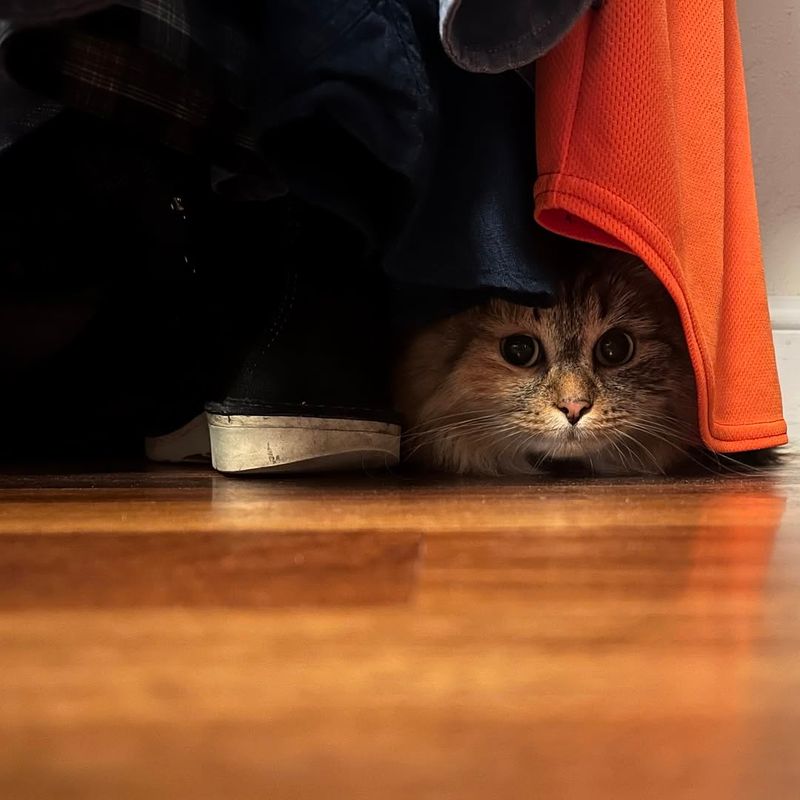
For a nervous cat, a good hiding spot is like finding a secret treasure chest. Cats are natural hunters, but they’re also prey animals, and having places to hide can make them feel safer. Whether it’s a cardboard box, a cozy cat tree, or even the space under your bed—these havens are crucial.
Think of hiding spots as your cat’s secret base, a place to observe without being seen. It’s like being a ninja, but much cuter! Providing multiple hiding options allows your cat to choose where they feel safest.
Rotate these spots or occasionally introduce new ones to keep things exciting. Remember, the goal is to offer a retreat, not a permanent hideaway. Encourage exploration by placing toys or treats nearby. Hiding spots are not just about physical shelter; they’re about providing mental security too. By giving your cat the power to choose their comfort zone, you empower them to face the world with more confidence. It’s a win-win situation—your cat feels safe, and you get to witness their adorable antics.
6. Play Soothing Music

Music has charms to soothe the savage beast, or in this case, the nervous kitty! Playing calming tunes can create a peaceful atmosphere for your anxious cat. Opt for soft classical music, ambient sounds, or even specially designed pet playlists. It’s like a spa day for their ears.
Imagine gentle melodies wafting through the air, lulling your cat into a state of relaxation. It’s an auditory hug that can ease tension and create a tranquil environment. Music can mask disturbing noises and provide a gentle distraction from stressors.
Experiment with different genres to discover what resonates with your feline friend. Maybe they have a secret love for jazz or a penchant for piano. The goal is to find a soundscape that transforms your home into a calm sanctuary. Your cat might even develop a favorite composer! Ultimately, the right music can be a purr-fect solution to quiet their worries and make your home a harmonious haven.
7. Engage in Interactive Play
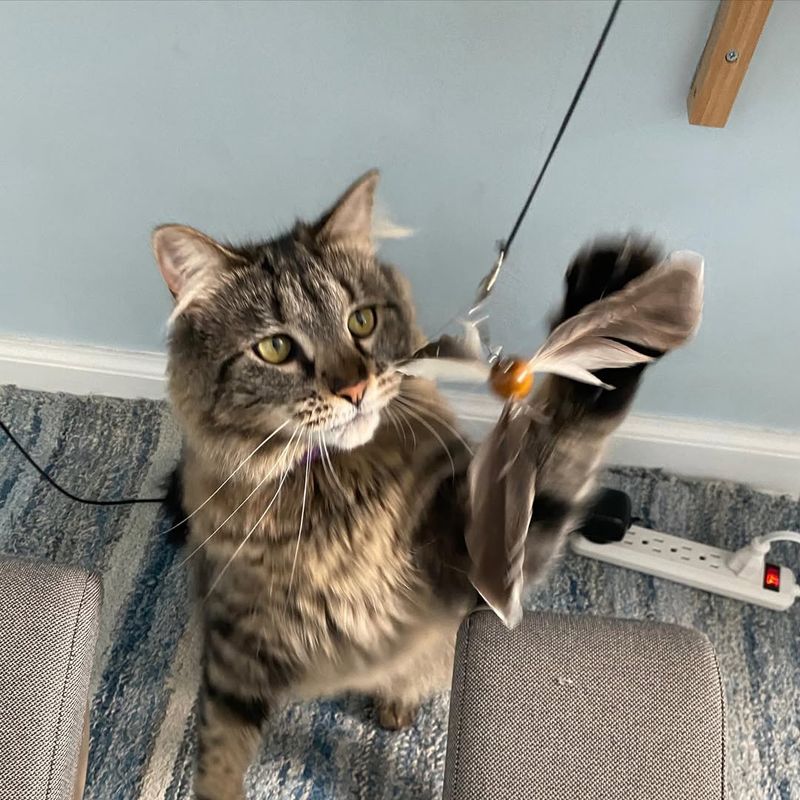
Interactive play is more than just entertainment; it’s therapy for your cat’s mind and body. Engaging your cat in play helps burn off nervous energy and builds a bond of trust. Think of it as a gym session where the trainer also happens to supply treats.
Feather toys, laser pointers, and even a simple string can become tools of transformation. These play sessions mimic hunting instincts, providing mental stimulation and physical exercise. It’s like a Broadway show, starring your cat as the main performer.
Make playtime a regular part of your routine. It doesn’t have to be a marathon; even short bursts of activity can make a difference. The key is to be present and involved. Through play, your cat learns to associate you with joy and fun rather than stress. It strengthens your relationship and creates a safe space for your cat to express themselves. So grab that feather wand and watch your cat’s worries fade away, replaced by the thrill of the chase.
8. Offer High Perches
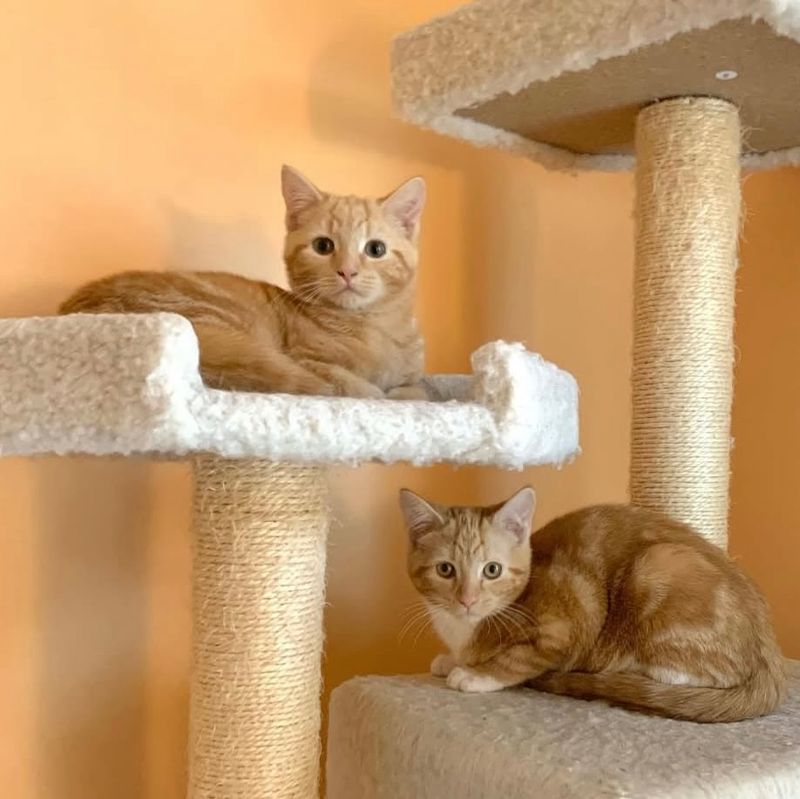
Cats love to rule from above, and offering high perches can help alleviate their anxiety. These elevated spots provide a vantage point for your cat to survey their kingdom and feel in control. It’s a bit like being the king or queen of the castle, with the world at their paws.
Whether it’s a cat tree, a window perch, or the top of a bookshelf, these high places offer security and comfort. From up high, they can observe without feeling threatened. It’s an empowering position that makes them feel large and in charge.
Encourage exploration by placing toys or treats on these perches. High spots are not only great for lounging but also for engaging their curious nature. Just ensure they have safe access to these areas, and you’ll have a happy cat with a royal view. By providing these elevated retreats, you acknowledge your cat’s natural instincts and offer them both physical and emotional security. It’s a simple addition with majestic benefits.
9. Use Aromatherapy
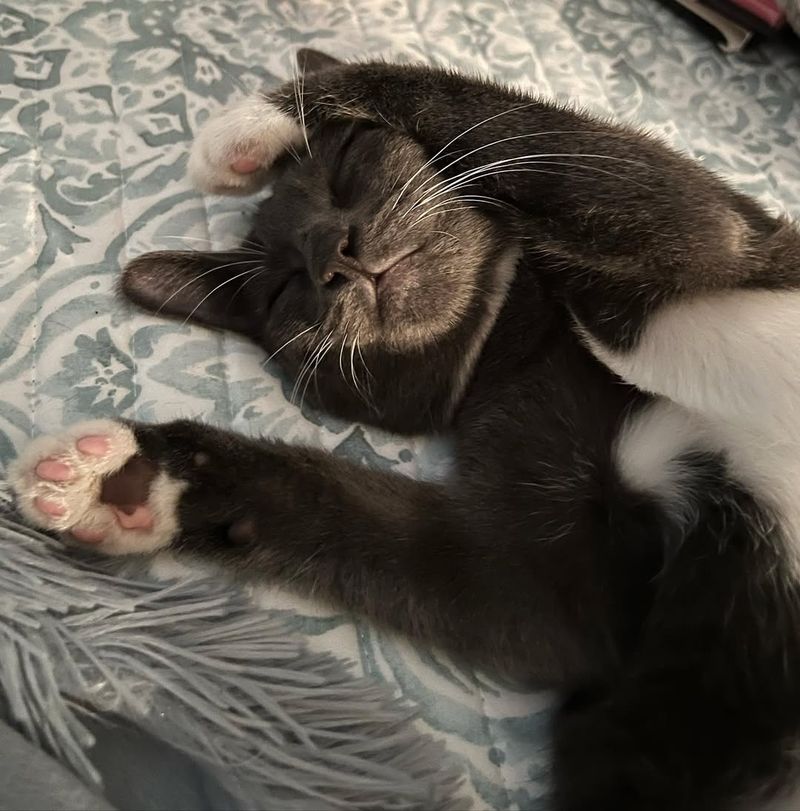
Aromatherapy isn’t just for humans; cats can benefit too! Certain scents, like lavender or chamomile, can have a calming effect on your feline friend. Using essential oils responsibly can create a soothing environment, reducing stress and anxiety.
Picture a gentle waft of lavender filling the room, making your home feel like a peaceful retreat. It’s like a day at the spa, designed specifically for your cat’s senses. However, ensure that any scent used is safe for pets, as some oils can be harmful.
Diffusers, sprays, or even cat-safe candles can be utilized to introduce these calming aromas. It’s an olfactory embrace that can make your kitty feel at ease. The key is to use aromatherapy as a complement to other anxiety-reducing strategies. By transforming their environment into a fragrant oasis, you provide a multi-sensory experience that supports relaxation. This blend of sights, sounds, and scents can turn your home into a sanctuary for peace-loving paws.
10. Use Gentle Touch Therapy
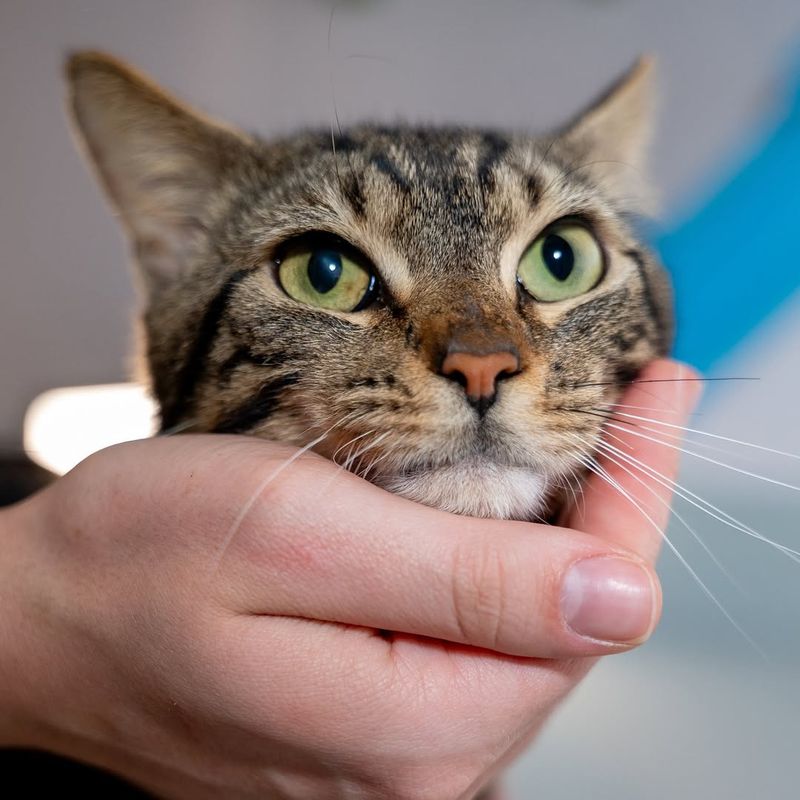
Sometimes, all a nervous cat needs is a gentle touch. Your hands can be a powerful tool in conveying love and reassurance. Gentle petting, focusing on areas like the back and head, can work wonders in calming an anxious kitty.
Consider it as a massage for the soul, where your touch becomes a language of comfort. This physical connection fosters trust and strengthens your bond. It’s like a silent conversation where every stroke says, “You’re safe with me.”
Observe your cat’s responses and adjust accordingly. Some cats prefer a soft touch, while others enjoy a more robust scratch. The key is to be patient and responsive. Over time, this gentle interaction can build a fortress of trust, making your cat feel secure in your presence. It’s an intimate way to connect and reassure your feline friend, making the world a little less frightening and a lot more loving.
11. Provide a Balanced Diet

A healthy belly leads to a happy cat! Providing a balanced diet plays a crucial role in reducing anxiety. Nutrient-rich foods support overall well-being, giving your cat the energy to tackle the world with confidence.
Think of food as fuel for both body and mind. The right nutrients can enhance mood, behavior, and even cognitive function. It’s like feeding your cat’s inner superhero, ready to conquer stress.
Consult your vet to ensure your cat’s diet meets their specific needs. Incorporate high-quality proteins and essential fatty acids. Avoid fillers and opt for natural ingredients. A well-fed cat is more likely to be a relaxed cat. By feeding them a balanced diet, you’re nurturing their mental and emotional health too. It’s a holistic approach to reducing anxiety, as food becomes a source of comfort and strength. Your cat will not only thrive physically but will also feel more secure and content.
12. Introduce Puzzle Toys
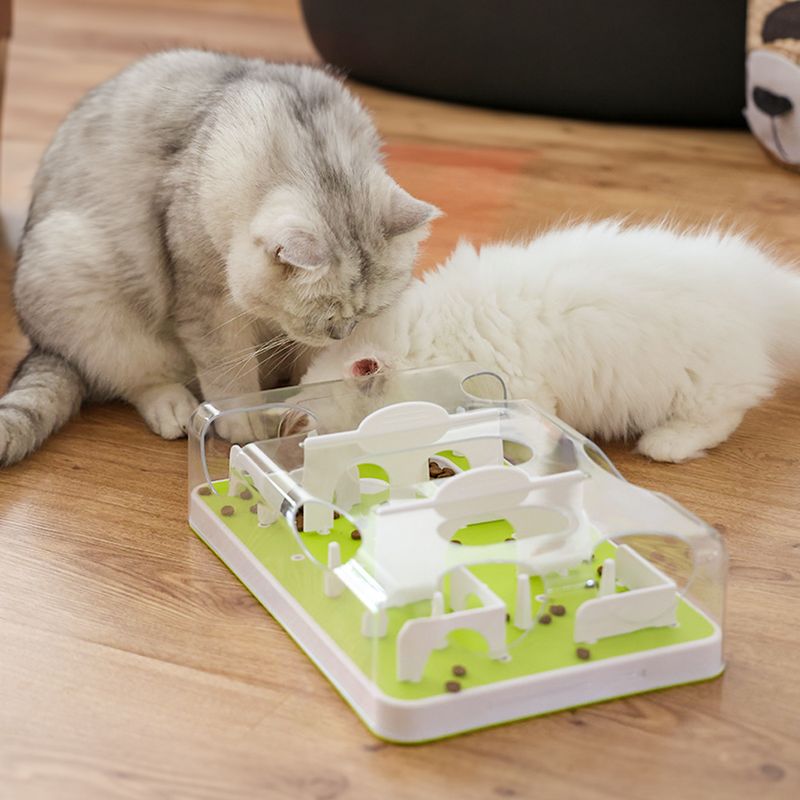
Puzzle toys are like brain games for your cat, providing mental stimulation and reducing anxiety. These intriguing toys challenge your cat’s mind, keeping them engaged and entertained. It’s like a crossword puzzle, but with a side of kibble!
Picture your cat, pawing and nudging at a puzzle toy, trying to unlock the delicious treasure within. This interaction not only entertains but also boosts confidence and problem-solving skills. Your cat becomes the detective in their own little mystery.
Introduce these toys gradually, and watch as your cat becomes a curious investigator. They offer a constructive outlet for energy and a distraction from stressors. By encouraging play and exploration, puzzle toys can significantly enhance your cat’s environment. It’s a fun and rewarding way to keep their minds sharp and spirits high. With each solved puzzle, your cat will not only earn a tasty reward but also feel more secure and accomplished.
13. Limit Stressful Interactions
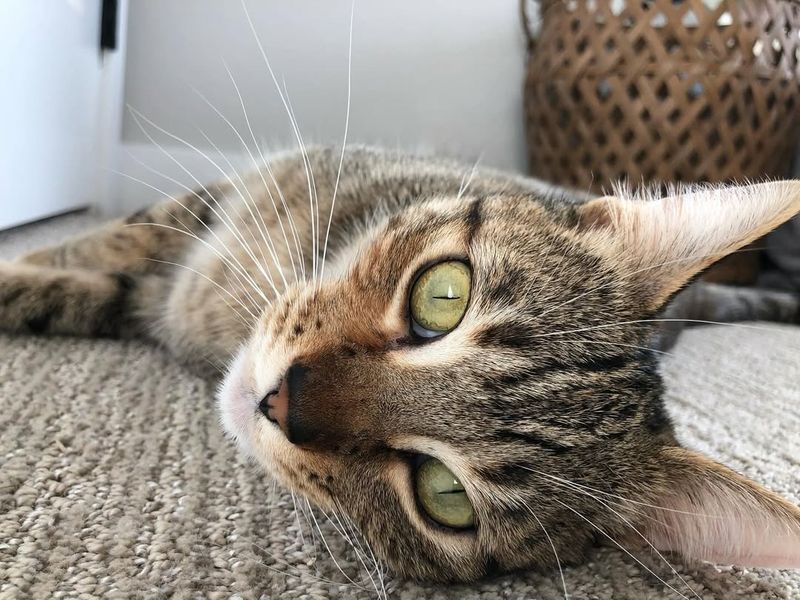
Sometimes, less is more—especially when it comes to interactions that stress your cat. Limiting exposure to situations or individuals that cause anxiety can make a world of difference. It’s like choosing a quiet coffee shop over a bustling concert.
Identify what triggers your cat’s nerves and strive to minimize these stressors. Maybe it’s a rowdy toddler or a boisterous puppy. Creating a calm environment requires a bit of detective work, but it’s worth the effort.
Encourage gentle interactions and teach others to respect your cat’s boundaries. It’s about creating a safe zone where your feline friend feels in control. By reducing these stressors, your cat can enjoy a more peaceful existence. They learn to associate their environment with safety and comfort rather than chaos. This approach fosters a harmonious living space, where your cat can thrive without fear.
14. Provide Ample Scratching Posts
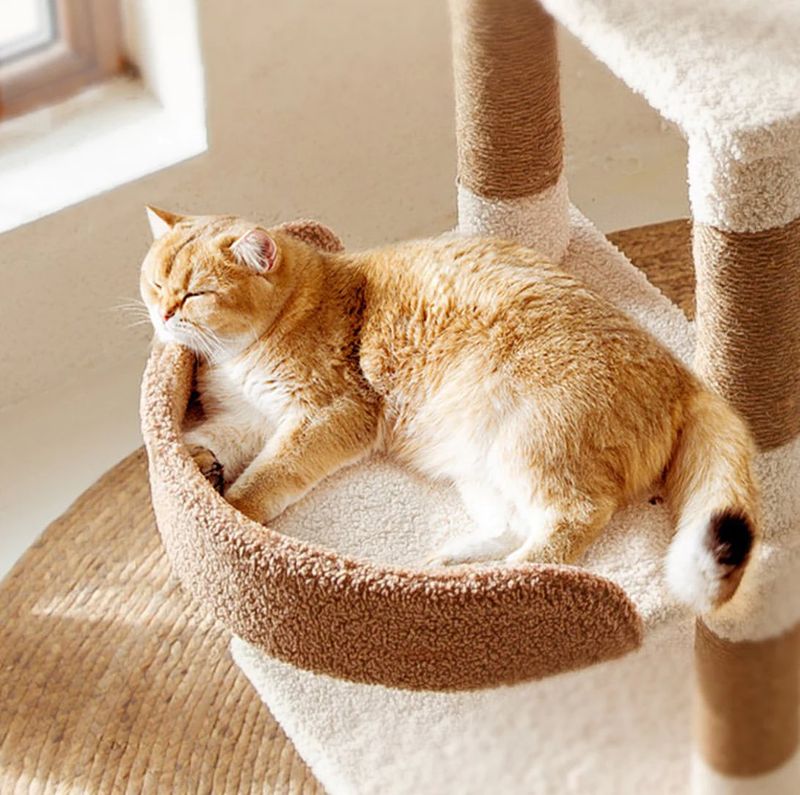
Scratching is a natural behavior for cats, offering both physical and emotional benefits. Providing ample scratching posts can reduce anxiety and prevent destructive behavior. It’s like having a personal gym and spa combo in one!
Think of a sturdy scratching post as the ultimate stress-busting tool. As your cat claws away, they’re not just sharpening their nails—they’re releasing pent-up energy and tension. It’s an exercise in both strength and relaxation.
Place multiple posts around your home, encouraging your cat to scratch to their heart’s content. The texture of sisal rope or carpet can provide the satisfying resistance they crave. By offering these outlets, you empower your cat to manage their stress constructively. It’s a win-win situation that keeps both your furniture and your feline happy. With each satisfying scratch, your cat can feel more secure and at ease in their environment.
